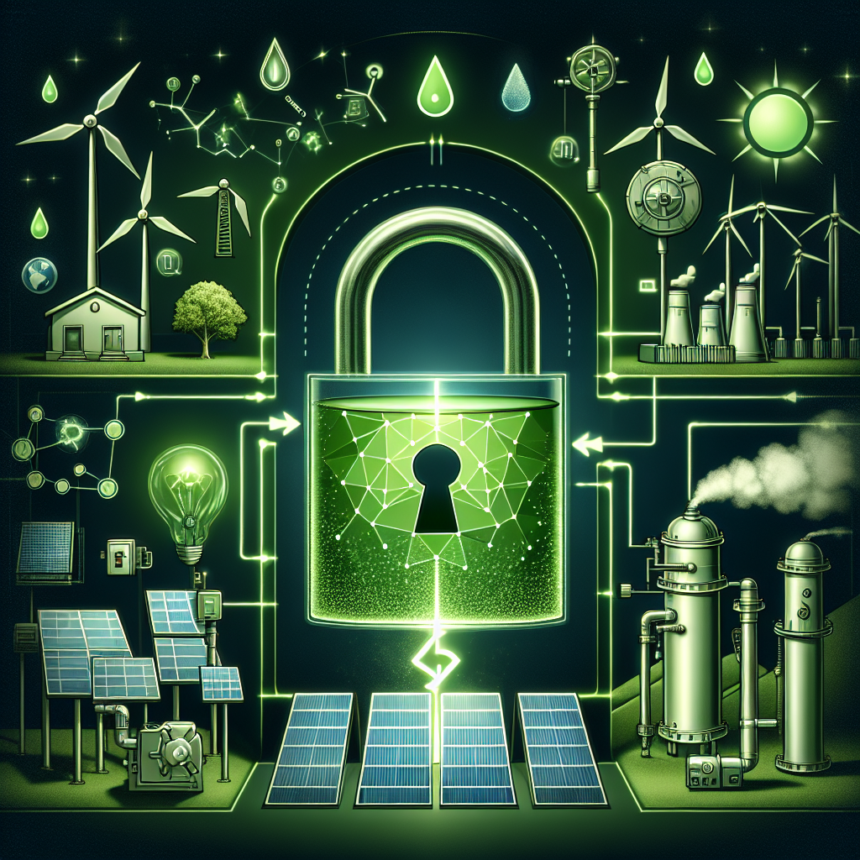Unlocking the Future: How Green Hydrogen is Set to Revolutionize Energy
In the global quest for sustainable energy solutions, green hydrogen has emerged as a game changer—a dynamic element poised to revolutionize the way we produce, consume, and utilize energy. With the potential to power industries, decarbonize transportation, and even serve as a pivotal energy storage solution, green hydrogen is carving a pathway toward a more sustainable future. This article explores the fundamentals of green hydrogen, its advantages, its diverse applications, and the challenges it faces in gaining widespread adoption.
What is Green Hydrogen?
Green hydrogen is hydrogen fuel produced using renewable energy sources—typically wind, solar, or hydropower—through a process called electrolysis. During electrolysis, water molecules are split into hydrogen and oxygen using electricity. When this electricity is sourced from renewable energies, the entire process generates hydrogen with zero carbon emissions, differentiating it from "grey" or "blue" hydrogen, which relies on fossil fuels and often emits greenhouse gases.
The Advantages of Green Hydrogen
-
Zero Emissions: One of the most significant benefits of green hydrogen is that its production and application do not emit carbon dioxide, making it a clean alternative to fossil fuels. As countries and corporations strive to meet carbon neutrality goals, embracing green hydrogen represents a substantial step toward reducing greenhouse gas emissions.
-
Energy Storage: Renewable energy sources like solar and wind power are intermittent, leading to energy surplus during peak production and shortages during demand spikes. Green hydrogen offers an innovative solution by storing excess energy generated from renewables and releasing it when needed. This capability enhances grid stability and reduces reliance on fossil fuels.
-
Versatility: Green hydrogen can be utilized in various sectors, including transportation, industrial processes, and residential heating. It can serve as a direct energy source, a fuel for fuel cells in vehicles, or even mixed with natural gas in existing pipelines, facilitating a smoother transition toward a hydrogen-based economy.
- Job Creation and Economic Opportunities: The green hydrogen sector has immense potential for job creation. As the demand for green hydrogen increases, it will also spur advancements in technology, infrastructure, and logistics, creating jobs in manufacturing, research, and distribution.
Applications of Green Hydrogen
-
Transportation: The transportation sector is one of the largest contributors to global CO2 emissions. Hydrogen fuel cells can power vehicles, buses, and trains, providing longer ranges and quicker refueling times compared to battery-powered electric vehicles. As technology matures, we may see hydrogen fuel becoming a viable alternative for heavy-duty transportation and shipping, where electrification poses challenges.
-
Industry and Manufacturing: Certain industrial processes—including steel production and chemical manufacturing—require significant amounts of energy and emit vast quantities of CO2. Green hydrogen can replace fossil fuels in these processes, providing a cleaner method to produce essential materials required for modern life.
- Power Generation: Green hydrogen can be blended with natural gas for power generation, enhancing the role of renewables in energy systems while minimizing emissions. It can also be used in gas turbines designed to operate on both hydrogen and natural gas, making it possible for existing infrastructures to transition smoothly.
Challenges Ahead
While the promise of green hydrogen is immense, several challenges must be addressed for it to reach its full potential:
-
High Production Costs: The cost of producing green hydrogen is currently higher than that of grey hydrogen. However, advancements in electrolysis technology and economies of scale are expected to drive costs down.
-
Infrastructure Development: Existing infrastructure primarily supports fossil fuels. Transitioning to green hydrogen necessitates extensive investment in new pipelines, refueling stations, and storage facilities to accommodate a hydrogen economy.
-
Technological Innovation: Continuous research and development are crucial for improving the efficiency and scalability of green hydrogen production, storage, and utilization technologies.
- Policy and Regulation: Effective government policy and regulatory frameworks will be essential to ensuring support for hydrogen projects, promoting investment, and laying the foundation for a robust hydrogen market.
Conclusion
As nations push towards ambitious climate targets and seek sustainable energy solutions, green hydrogen stands at the forefront of the clean energy revolution. Its potential to decarbonize multiple sectors while ensuring energy security makes it a cornerstone of future energy systems. With investments in infrastructure, technological innovation, and favorable policy environments, green hydrogen could very well unlock a sustainable, cleaner energy future.
FAQs
Q: What is the difference between green hydrogen and grey hydrogen?
A: Green hydrogen is produced using renewable energy sources through electrolysis, while grey hydrogen is produced from natural gas through steam methane reforming, which emits carbon dioxide.
Q: How is green hydrogen stored?
A: Green hydrogen can be stored in pressurized tanks, in liquefied form, or by converting it into chemical compounds like ammonia, which can be more easily transported.
Q: What are the main barriers to the widespread adoption of green hydrogen?
A: High production costs, lack of infrastructure, need for technological innovations, and supportive government policies are significant barriers.
Q: Can green hydrogen be used in transportation?
A: Yes, green hydrogen can power fuel cells in vehicles, making it a viable option for both light-duty and heavy-duty transportation.
Q: What is the future outlook for green hydrogen?
A: The future of green hydrogen is promising, with increasing global investment, technological advancements, and growing recognition of its role in achieving climate goals.









